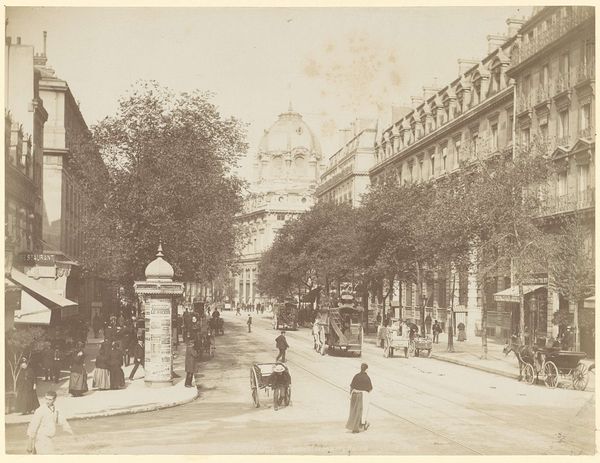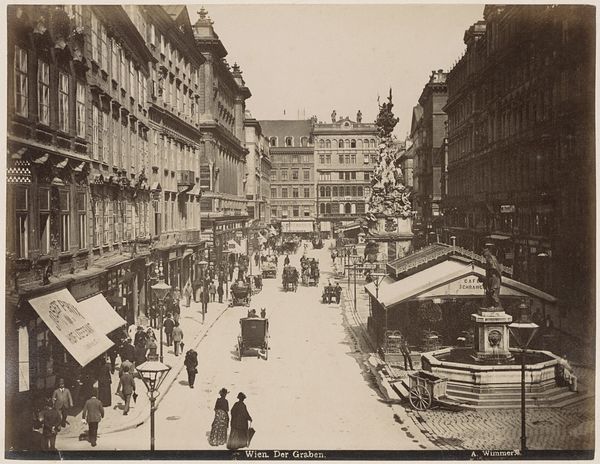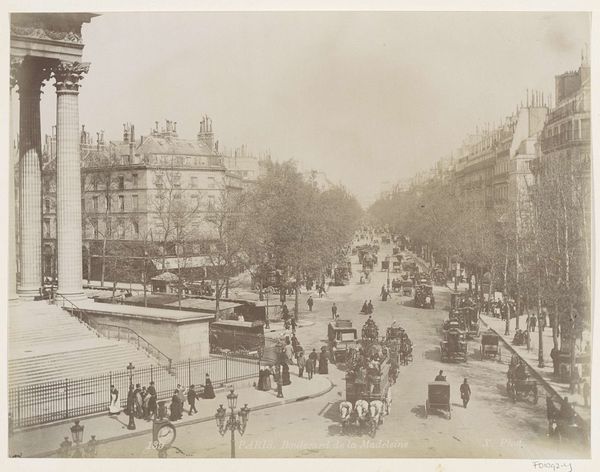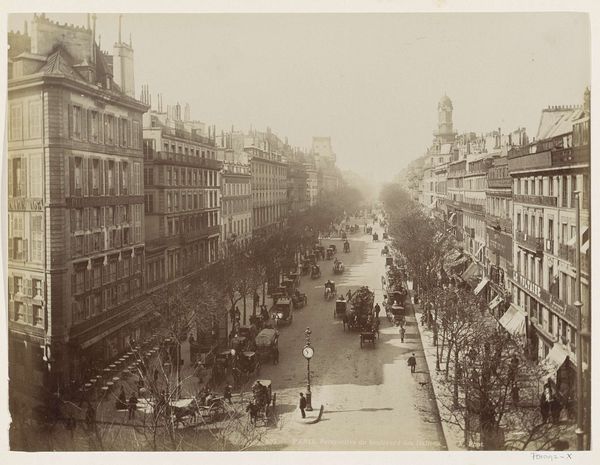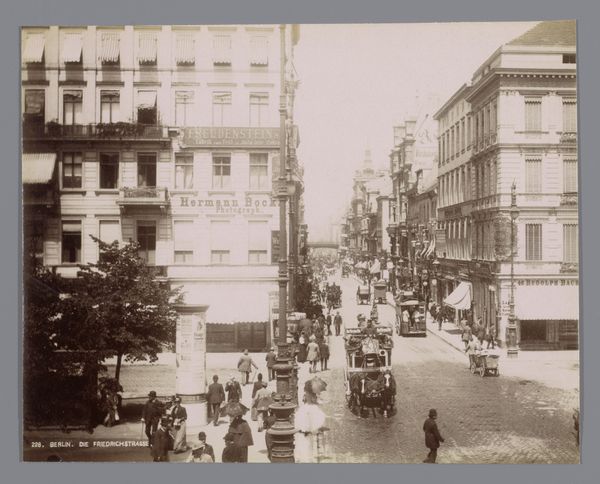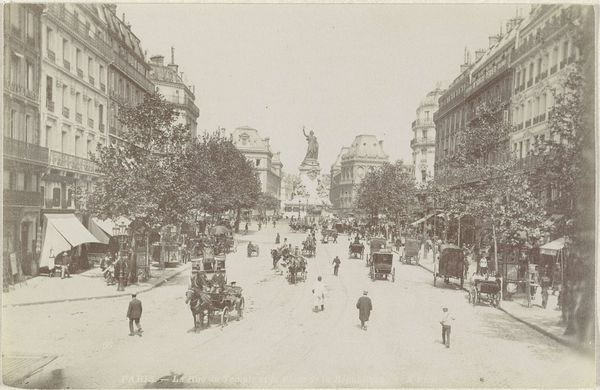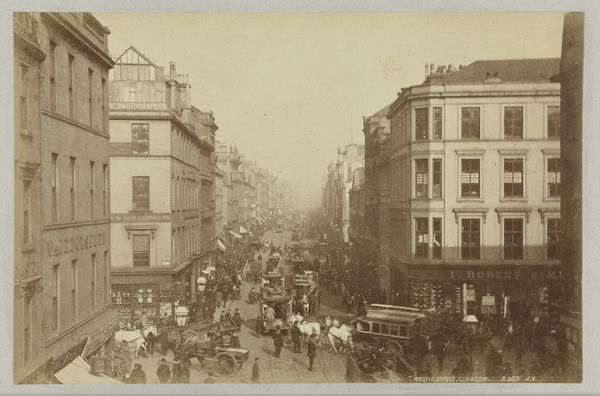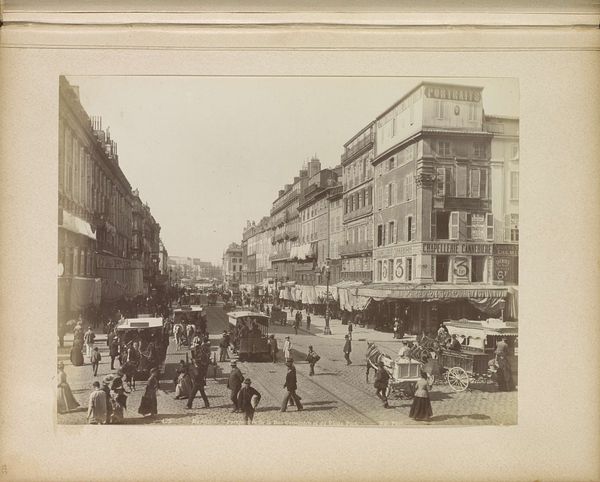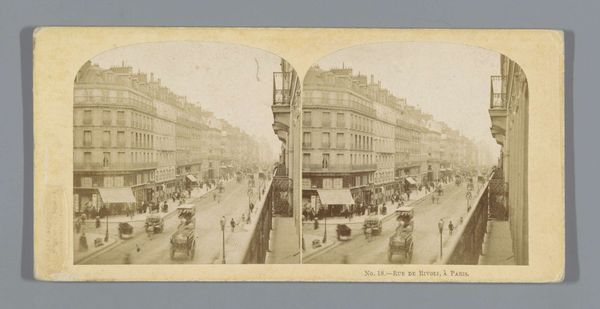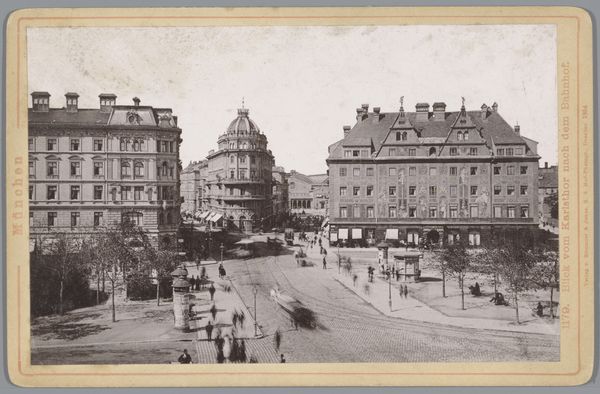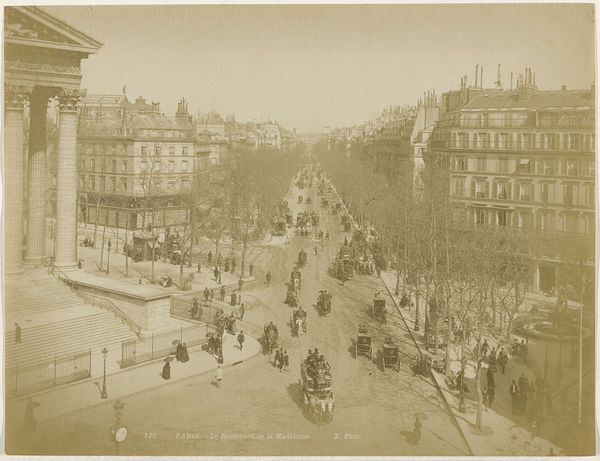
photography
#
street-photography
#
photography
#
cityscape
#
realism
Dimensions: height 120 mm, width 184 mm
Copyright: Rijks Museum: Open Domain
Editor: Here we have Étienne Neurdein's "Anspachlaan in Brussel," a photograph captured sometime between 1860 and 1900. The sepia tones lend it such a nostalgic, almost dreamlike quality despite its realism. What stands out to me is how the buildings almost mirror each other, creating this stunning symmetry. How do you interpret this work from a formal perspective? Curator: Indeed. Note how Neurdein employs light and shadow to articulate the architectural details, creating depth and texture. The strong lines of perspective converge towards the horizon, drawing the viewer into the cityscape. Consider how the arrangement of forms - the buildings, the street, the figures - establishes a visual rhythm that guides the eye through the composition. Do you observe how this rhythm is achieved? Editor: I do. It seems he's using the repetition of architectural elements, like the windows and awnings, and the placement of the people to lead our eye further into the image. The light is beautifully distributed too, contrasting with the darks. Curator: Precisely. The contrast between light and shadow serves to define the forms and create a sense of spatial depth. Furthermore, consider how the materiality of the photographic print itself – its tonal range, its texture – contributes to the overall aesthetic experience. We might even consider this early photography as challenging traditional painting's claims to representation. What would you say? Editor: That’s insightful. I hadn’t considered how the medium itself contributes to the image's impact. The very lack of color draws you in differently than a painted scene would. The photograph feels almost tangible, as though I could reach out and touch this moment in time. Thank you for highlighting that for me. Curator: It is the synthesis of form and medium that elevates Neurdein's work beyond mere documentation. These visual components harmonize to invite contemplation of a moment in history. Editor: Absolutely. I appreciate the insight into Neurdein's deliberate manipulation of light, shadow and form. Looking closely has given me a completely new respect for his artistic intention.
Comments
No comments
Be the first to comment and join the conversation on the ultimate creative platform.

